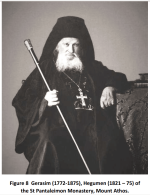it is humorous when you give two contradictory arguments, without even noticing.

=============
Did you find any P47 and Sinaiticus significant agreements?
Are you watching Alexandrinus and the Athos Revelation mss?
Also check out Elliott, "A Short Textual Commentary on the Book of Revelation and the “New” Nestle," Novum Testamentum 56 (2014) 68-100.
"In Revelation most text-critics pay lip service to the “reliability” of A.02 C.04 over against P47/ Sinaiticus (as far as the so-called Alexandrian witnesses are concerned) or in 046, 051, 052 plus minuscules for the Byzantine witnesses. (The majority text itself is frequently divided.) But if we study the texts produced by the different critics it can readily be demonstrated how erratically their respective manuscripts are treated." p. 71.
Eg. p.77
Rev 9:12-13,
12: Ἡ Οὐαὶ ἡ μία ἀπῆλθεν· ἰδοὺ ἔρχεται ἔτι δύο Οὐαὶ
μετὰ ταῦτα.
13:
Καὶ ὁ ἕκτος ἄγγελος ἐσάλπισεν· καὶ ἤκουσα φωνὴν μίαν ἐκ τῶν τεσσάρων κεράτων τοῦ θυσιαστηρίου τοῦ χρυσοῦ τοῦ ἐνώπιον τοῦ Θεοῦ,
Variants here concern punctuation as well as the author’s usage:
- μετα δε ταυτα και 0207
- μετα ταυτα. Και A.02 P.025 1611 1841 MajA
- και 2053
- και μετα ταυτα 046
- Μετα ταυτα και 1006 1854 2329 2351 MajK
- μετα δε ταυτα και 0207
- μετα ταυτα P47 א 2344
- om. μετα ταυτα 2053
The initial και of v.13 was moved to precede μετα ταυτα by 046 or omitted
by P47 א 2344. Elsewhere in Revelation μετα ταυτα (or μετα τουτο)
begins a sentence or clause and therefore these words could stand first
here as being consistent with this book. The only exceptions to this practice
are 1:19; 4:1(sec.) which are different as in those contexts the phrase
refers to specific items. But the text in Nestle28 is that of A.02, a reading
which is also in accord with the author’s way of introducing angels previously
mentioned, see 8: 8, 10, 12; 9:1 i.e. with simple και at the beginning.
We are thus left with a dilemma!
Eg. p.79
Rev: 14:3
Nestle
καὶ ᾄδουσιν ᾠδὴν καινὴν ἐνώπιον τοῦ θρόνου καὶ ἐνώπιον τῶν τεσσάρων ζῴων καὶ τῶν πρεσβυτέρων· καὶ οὐδεὶς ἐδύνατο μαθεῖν τὴν ᾠδὴν εἰ μὴ αἱ ἑκατὸν τεσσεράκοντα τέσσαρες χιλιάδες, οἱ ἠγορασμένοι ἀπὸ τῆς γῆς.
Majority Greek Text
καὶ ᾄδουσιν
ὡς ᾠδὴν καινὴν ἐνώπιον τοῦ θρόνου καὶ ἐνώπιον τῶν τεσσάρων ζῴων καὶ τῶν πρεσβυτέρων καὶ οὐδεὶς ἐδύνατο μαθεῖν τὴν ᾠδὴν εἰ μὴ αἱ ἑκατὸν τεσσεράκοντα τέσσαρες χιλιάδες οἱ ἠγορασμένοι ἀπὸ τῆς γῆς
ως A.01 C.04 1006 1841 2042 MajA
omitted. P47 א P.025 (= TR) (as in Nestle25) (P.025 = Codex Porphyrianus, an uncial manuscript dated to 9th century).


